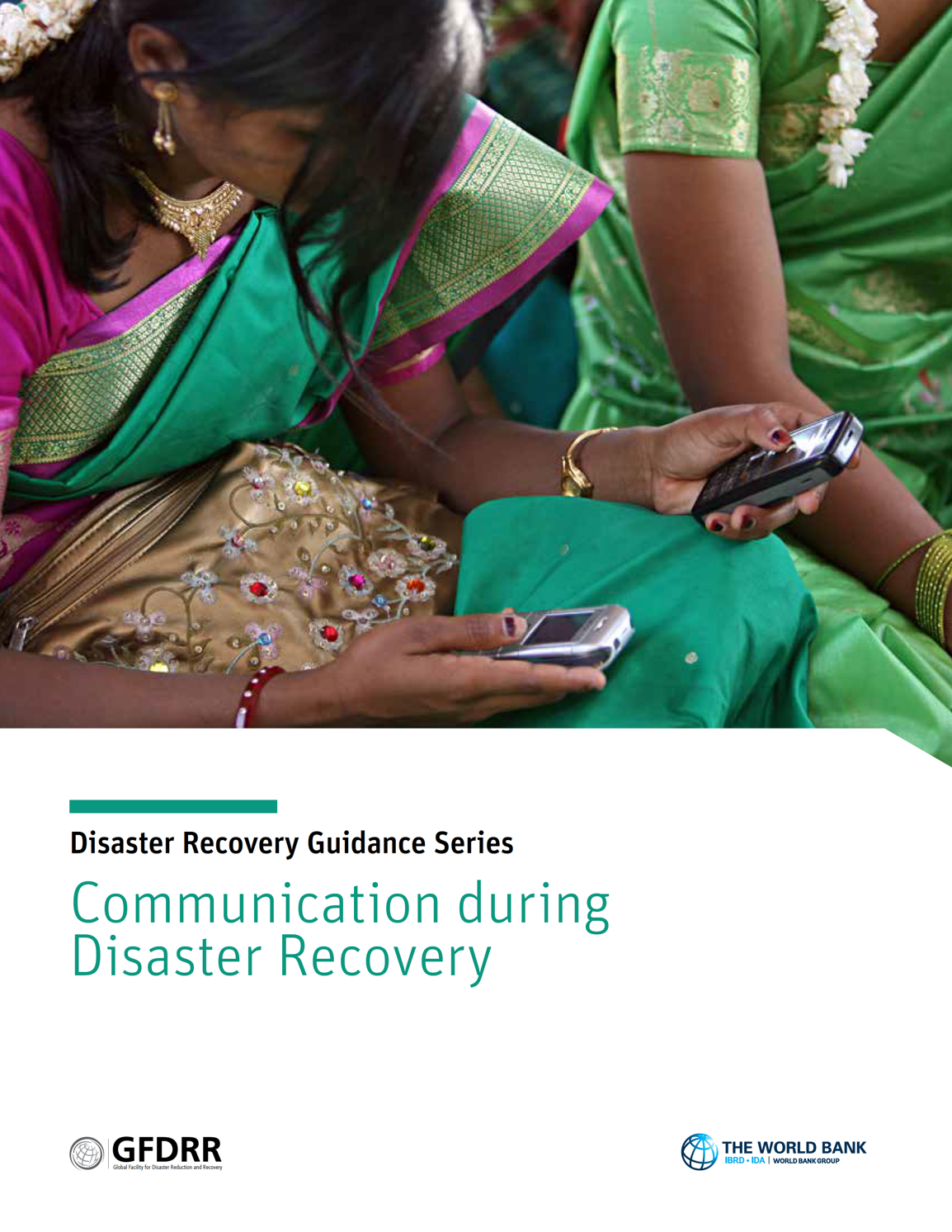Recovery at its core is a partnership between the affected community, the broader community, governments, aid organizations and the private sector. As such, successful recovery is built on effective communication between these key stakeholders. Good communication is also needed to manage community expectations about what government can and cannot do; who is responsible within the government for leading the recovery effort; and what communities can expect in terms of recovery assistance.
The Communication During Disaster Recovery Guidance Note provides practical guidance for governments regarding how to effectively communicate with communities during the recovery phase following an emergency. It explains how to identify communication needs, and presents “best fit” communication methods and strategies to deploy to support Disaster Recovery Frameworks (DRF) and recovery strategies.
This Guide is intended primarily for local and national government officials and key decision makers involved in disaster recovery planning and operations. As such, it is also likely to include finance and/or central planning agencies responsible for coordinating the development of a whole-of-government DRF or similar recovery strategy. Other local and national stakeholders including civil society organizations (CSOs), non-governmental organizations (NGOs), and private sector entities also may benefit from the guide. This Guide focuses on external government communication with individuals and communities. It is not aimed at supporting internal communication within government. Also, there is no specific geographic focus to this resource. Rather, it has been developed to support communication during recovery planning and operations in a range of different country contexts. Similarly, this Guide is designed to be applicable to any disaster type (for example, storms, floods, landsides, earthquakes, volcanic eruptions, drought, wildfires), as individuals and communities often require the same types of information, irrespective of the type of disaster. The information contained herein is useful for guiding effective communication in large- to small-scale recovery contexts. The Guide is also applicable to conflict settings, as disasters often strike countries affected by conflict and fragility.

